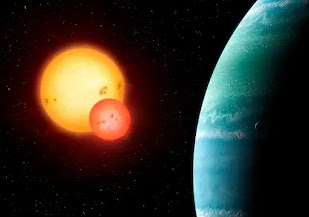Lightning is the most spectacular element of a thunderstorm. In fact it is how thunderstorms got their name. But wait a minute, what does thunder have to do with lightning? Well, lightning causes thunder.
Lightning is a discharge of electricity. A single stroke of lightning can heat the air around it to 30,000°C (54,000°F)! This extreme heating causes the air to expand explosively fast. The expansion creates a shock wave that turns into a booming sound wave, known as thunder.
What's Happening Within the Cloud?
As ice crystals high within a thunderstorm flow up and down in the turbulent air, they crash into each other. Small negatively charged particles called electrons are knocked off some ice crystals and added to other ice crystals as they crash past each other. This separates the positive (+) and negative (-) charges of the cloud. The top of the cloud becomes positively charged with particles called protons, while the base of the cloud becomes negatively charged.
How Is a Lightning Bolt Formed?
Because opposites attract, the negative charge at the bottom of the storm cloud wants to link up with the ground’s positive charge. Once the negative charge at the bottom of the cloud gets large enough, a flow of negative charge called a stepped leader rushes toward the Earth. The positive charges at the ground are attracted to the stepped leader, so positive charge flows upward from the ground. When the stepped leader and the positive charge meet, a strong electric current carries positive charge up into the cloud. This electric current is known as the return stroke. We see it as the bright flash of a lightning bolt.
Thunder and lightning occur at roughly the same time although you see the flash of lightning before you hear the thunder. This is because light travels much faster than sound.
The accumulation of electric charges must be great enough to overcome the insulating properties of the air. When this happens, a stream of negative charges pours down toward a high point where positive charges have clustered due to the pull of the thunderhead.
Visit Our Website: https://astronomy.sfconferences.com/
face Book:https://www.facebook.com/profile.php?id=100090440442457












